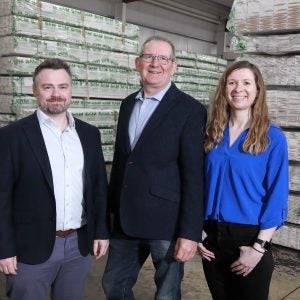Modern references to the waste sector often quote terminology such as ‘the circular economy’, ‘resource efficiency’ and ‘waste as product’. Wood waste is no exception to these concepts.
Post-consumer wood waste should not be thought of as waste but rather as a useful resource for production of new products and energy generation. While a decade ago most wood waste was reused and recycled locally, the situation has changed and significant volumes are now being shipped across Europe. This trade has triggered discussions about waste hierarchy, energy security, energy subsidies and, ultimately, the longevity of such trade. Such discussions are interesting and it is important to explore the reasons behind the trade in order to understand whether we can expect a change in the near future.
Good waste management principles require waste hierarchy to be followed, whereby materials are first re-used and recycled into new products, before energy recovery and disposal.
Industry trends
Wood waste trade predominantly occurs in western Europe, in countries with established wood recycling sectors and relevant consumer base – be it the panel industry, energy sector, or other users. Most European countries have particleboard production facilities. However, not every producer is using wood waste, because:
– Either there is sufficient supply of affordable virgin wood, such as smalldiameter roundwood and sawmill residues locally
– Producers are targeting production of high quality panels and use of wood waste is limited to small volumes of the highest quality material only, or
– Distance to wood waste markets becomes uneconomical.
Germany and France are the leading producers of particleboard in western Europe (see Table 1), and both have a good supply of virgin wood.
Both countries have experienced increasing prices for all wood feed stocks, driven by increasing competition from bioenergy during the last decade. Yet there is still no significant shift towards the use of wood waste in particleboard production due to concerns over panel quality. France has become the key supplier of wood waste for panel production in neighbouring Belgium and Italy (see Figure 1), while domestically the share of wood waste used in the raw material mix still remains low.
Most of this exported wood waste originates in eastern France, with the northeast supplying predominantly to Belgium and the southeast to Italy. Exports to Spain are notably higher than in the past, reaching up to 200,000 tonnes, compared to almost half that in recent years.
Northern Italy is the heartland of the Italian particleboard industry, with many producers well positioned to source from France. Some of the largest of these have established railway infrastructure to transport wood waste over long distances and have regular deliveries from the neighbouring countries.
Quality challenges
Decisions to use wood waste can be driven either by necessity, or be a part of a strategic change in feedstock sourcing. One of the Belgian producers made a strategic decision to use pallet wood in particleboard production 15 years ago. This was part of a bigger strategic change to shift product focus from furniture grade to construction products.
As construction panels have somewhat lower machinability requirements, wood waste offers a realistic pathway to cut production costs – using pallet wood was part of the solution.
As proportions of wood waste in feedstock increase, physical and chemical contamination challenges become more profound.
With ever-increasing use of panels in furniture and construction, the general quality of wood waste is decreasing. Sorting and removal of unwanted types of wood and other contaminants, such as MDF and preservative-treated material, prior to chipping, is extremely important for these end-uses.
At times, the available material is on the cusp of acceptable quality for panel production. Below this threshold, wood waste is suitable for energy production only.
There is a growing need to improve physical screening and sorting prior to chipping in order to lessen chemical contamination in wood used for particleboard production.
To overcome these challenges, panel producers requiring large volumes of wood waste have invested heavily in processing facilities to remove a quite wide range of contaminants.
Many panel producers are now caught up in an unholy trinity of wood waste issues where:
– it is becoming scarcer due to increasing competition from bio-energy
– prices are increasing due to competition – quality is deteriorating due to increasing share of panels and other contaminants in the wood stream.
Political implications
It is not surprising that some panel producers are lobbying to limit subsidies to the bio-energy sector, hoping to limit competition and cost pressure.
Whilst there could be some small successes with changing eligibility criteria for subsidies, it would still not change the fact that the overall quality of wood waste is decreasing as panel material presence is increasing.
Particleboard producers must look for technological solutions to produce new panels from the old ones.
If, in an extreme case, all bio-energy subsidies were to dramatically disappear overnight, then large amounts of wood waste still cannot be recycled into new particleboard.
With landfill not being an option in some countries (Germany, Netherlands, Denmark, Belgium, for instance), its use for energy generation remains the best alternative.
Impact of EfW investment
A number of European countries have established large bio-energy and energyfrom- waste (EfW) capacity, which uses wood waste as the main, or one of the main, feed stocks.
In some parts of Europe, demand from the energy sector is greater than locally, or even nationally, available wood waste.
As can be seen in Figure 2, Swedish and German power plants are very reliant on wood waste imports from far away countries.






